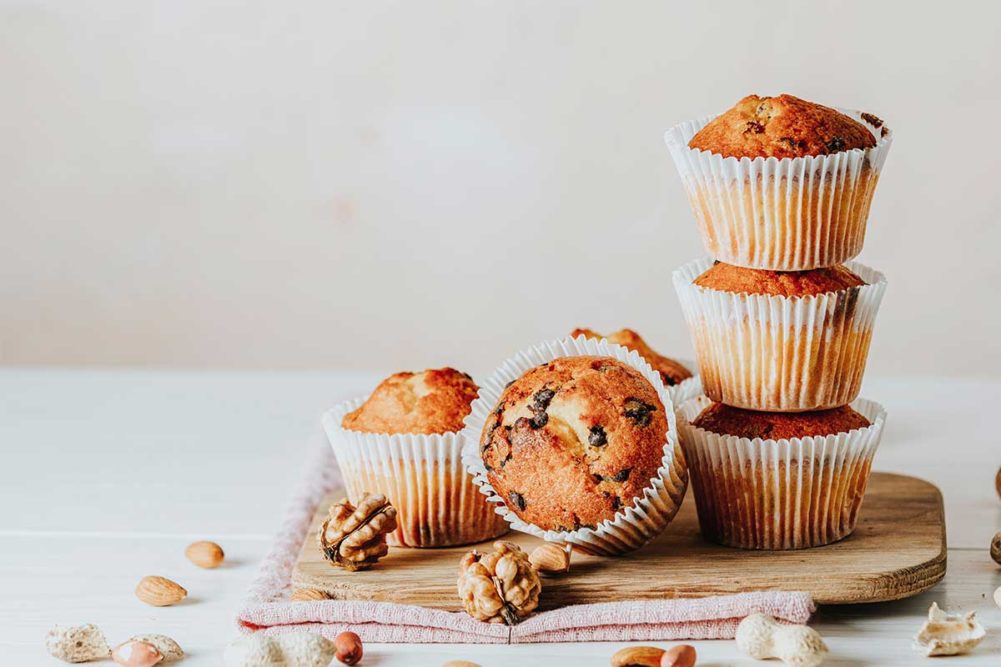Baking powder is a convenient, reliable source of leavening for baked goods and works well in a variety of applications, but bakers sometimes have special requirements for products that warrant a distinctly designed leavening system.
“A custom blend chemical leavening system is designed to release gas specifically for the product it is put into,” said Nita Livvix, R&D manager, Clabber Girl. “This is so that the product develops the proper amount of air cells and expansion in the batter prior to the structural set that happens with heat in the oven from starch gelatinization. Wheat flour contains 70% to 80% starch. During starch gelatinization, starch granules absorb liquid, swell and eventually burst, causing the batter to thicken. With continued heat and absorption of liquid, the structure of the product is formed.”
Specially designed leavening systems work well in a variety of products, and bakers will benefit if they learn about their advantages, which products need them the most and the best methods for using them.
Custom blends can be precisely formulated to achieve the rising time needed and provide better control over the baking reaction, said Yanling Yin, director, bakery applications, Corbion.
“They also allow for selecting specific ingredients that work best with the product being made, improving effectiveness,” Yin added. “For businesses that bake in large quantities or have specialized needs, custom blends can be more cost-effective, reducing the amount of leavener needed and cutting down on waste.”
Figuring out the optimal leavening system requires a focus on processing needs, which are largely dependent on the specific bakery application, said Paul Bright, senior principal scientist, AB Mauri North America.
“For example, designing the appropriate gassing rate of reaction baking powder for a ‘hot’ tortilla dough — 85°F to 90°F — to produce fluffy, opaque and tender eating flour tortillas will be entirely different compared to a baker who is producing cake batters,” he explained. “Cake batters are significantly colder in temperature and higher in moisture content and will take significantly longer to bake, about 30 minutes versus mere seconds for tortillas.”
The right custom blend leavening system for a formulation can enhance processing capabilities and fine-tune a baked good’s characteristics, Bright said.
“These final baked characteristics can be related to volume or size, symmetry, color, crumb structure, eating quality and shelf life,” he said.
Using custom leavening systems in nontraditional baked products could provide advantages to bakers.
“Unbaked or partially baked frozen dough or batter systems that have long shelf life, chemically leavened products that are more related to yeast-raised products as opposed to sweet goods, and processes that are either very rapid or excessively long are examples of systems where AB Mauri would encourage custom leavening systems,” Bright said.
Product applications that contain a high level of acidic ingredients often benefit from custom leavening systems to achieve the desired amount of rise, Livvix said.
“These custom leavening systems focus on providing enough gas to compensate for the loss of gas from reactivity with acidic ingredients,” she said. “There are other products that need minimal gas release with liquid; then the reaction goes dormant once the liquid is absorbed in a dough, and the dough is then packaged, such as refrigerated dough. The reaction then continues at an accelerated rate when the dough is baked.”
Applications that use long assembly lines may also benefit from leavening formulas that react with liquid in a slow manner then accelerate when placed in a hot oven, Livvix added.
“Muffins may also use custom leavening that contains a heat-activated late-reactive leavening acid such as dicalcium phosphate in order to get the desired cracking on top,” she said.
Custom systems can help improve textures in a variety of products, Yin said.
“In tortilla applications, a custom blend could create a different appearance of a product that offers various textures, like fluffy, translucent, blisters or opaque,” she said. “In a biscuit application, a custom blend would allow it to create a flaky and soft internal texture.”
This article is an excerpt from the April 2024 issue of Baking & Snack. To read the entire feature on Chemical Leavening, click here.






